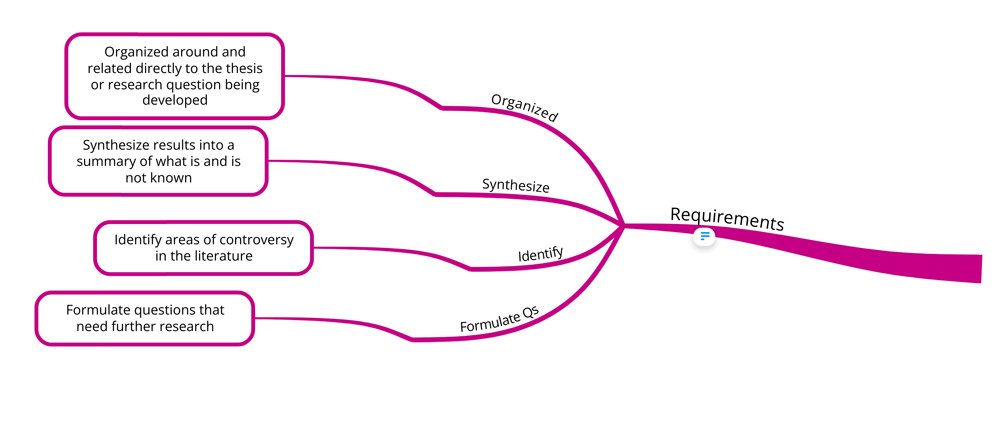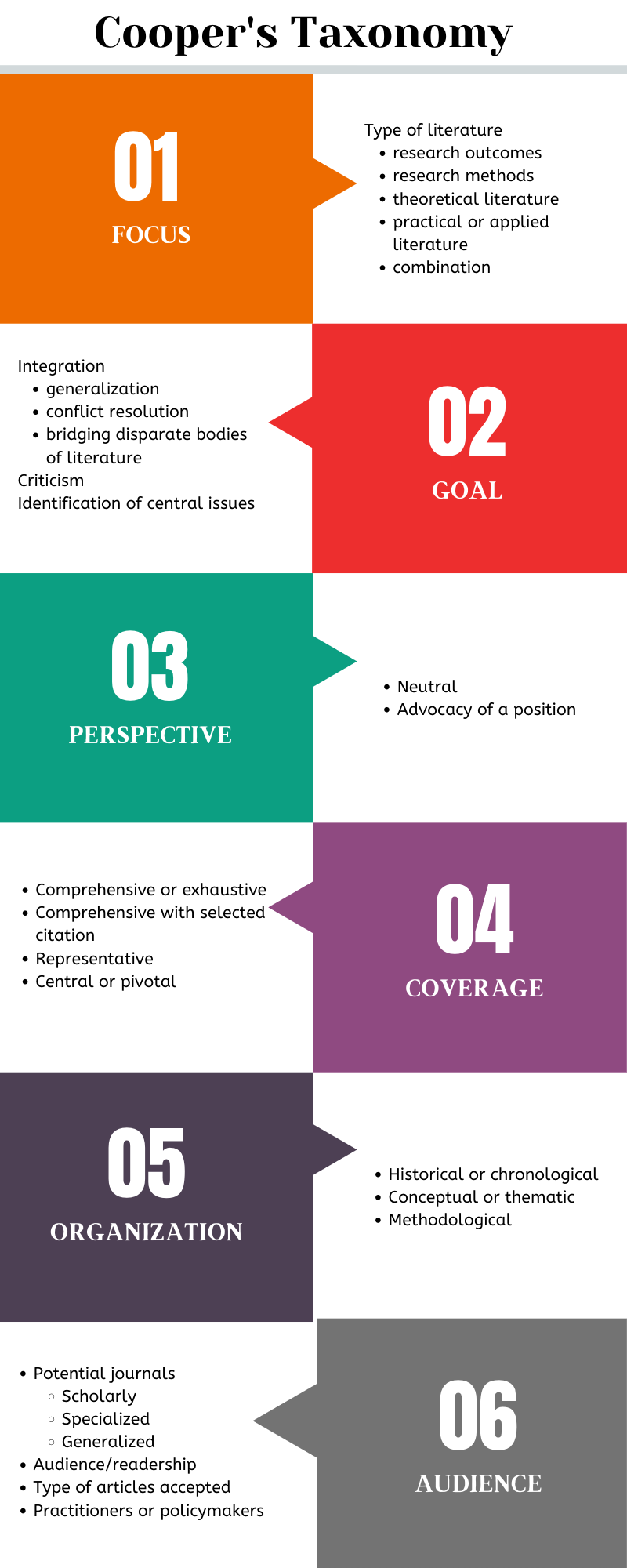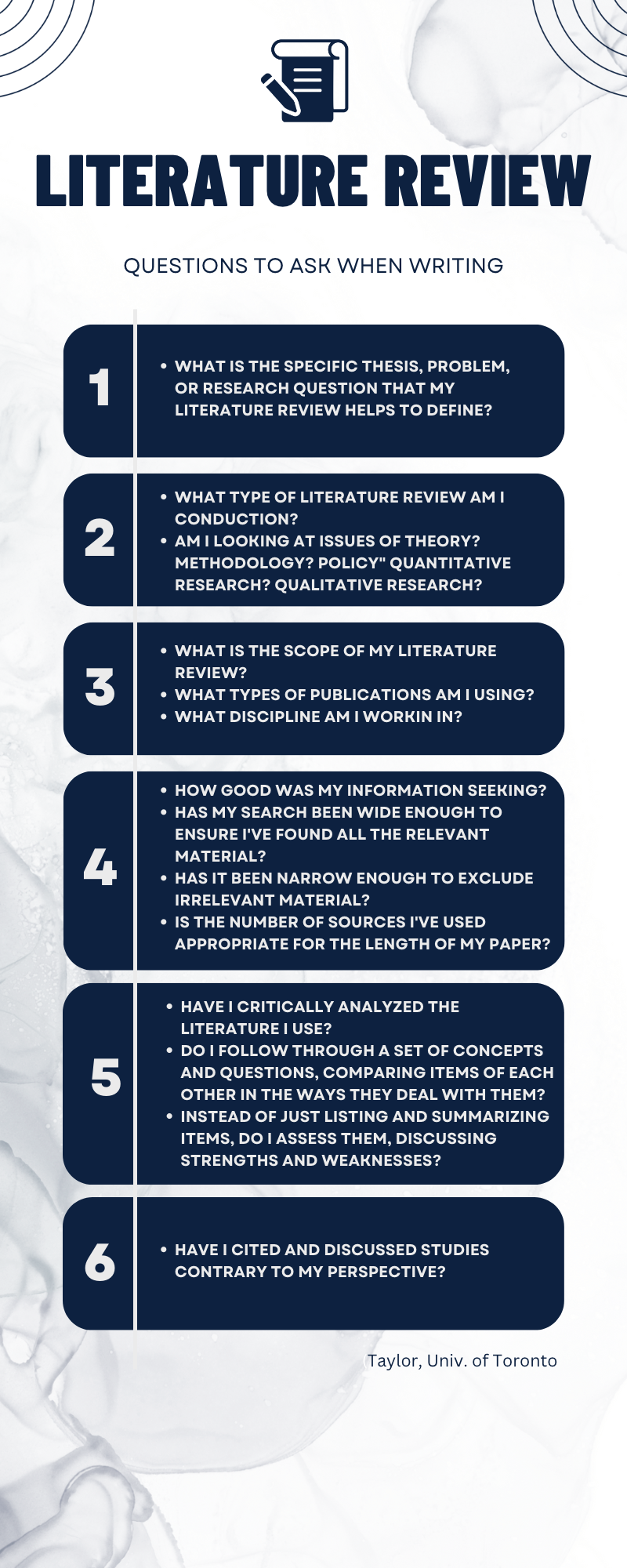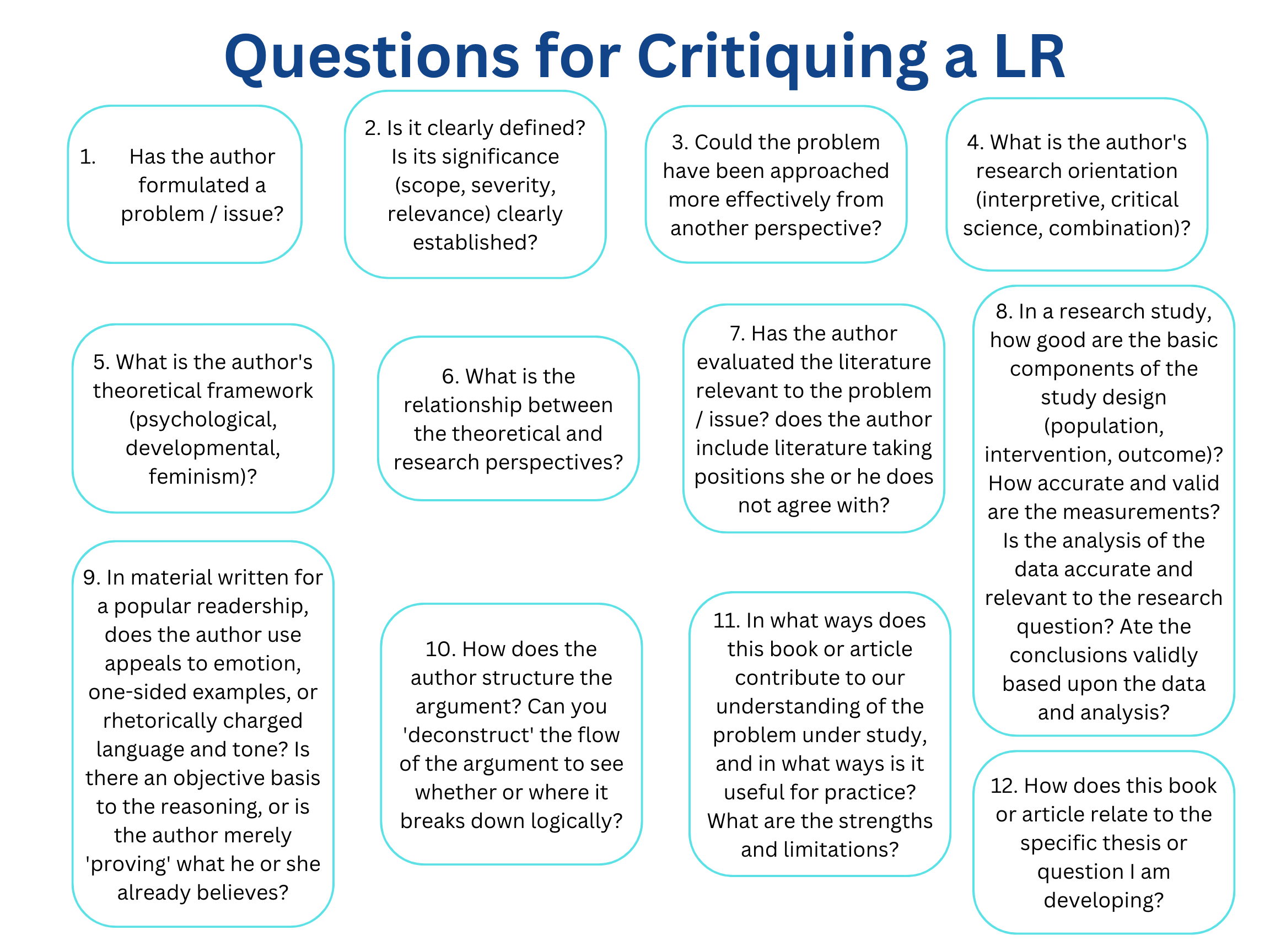Literature Reviews
What do we know now that we didn’t know before, and why should we care? Why should we consider your anser credible?
(Yorks, 2008, p. 139)
Literature Reviews
The purpose of a literature review is to:
Convey to the reader what knowledge and ideas have been established on a topic, and what their strengths and weaknesses are.
(Taylor, Univ. of Toronto; https://advice.writing.utoronto.ca/types-of-writing/literature-review/)
The primary purpose of a literature review is NOT to portray a list of what has been writing.
(Turner, 2023)
A literature review should:
- be organized around and related directly to the thesis or research question you are developing,
- synthesize results into a summary of what is and is not known,
- identify areas of controversy in the literature, and
- formulate questions that need further research. (Taylor, nd)
Additionally, literature reviews should also address the follwoing concerns:
- Is the topic selected of interest to your audience, the industry and/or the publication you are targeting?
- Does the literature make a significant, value-added contribution to new thinking in the field (Torraco, 2005).
- Does the literature add value to the field? What value?
- Does the literature identify a discrpancy in the literature, identify a gap in the literature, identify confilcing / contradictory views in the existing literature, or identify a change in common trends? (Turner, 2023)
PRISMA:
Transparent Reporting of Systematic Reviews and Meta-analyses
To ensure a systematic review is valuable to users, authors should prepare a transparent, complete, and accurate account of why the review was done, what they did, and what they found.
(https://www.bmj.com/content/372/bmj.n71)
PRISMA 2020 Checklist
http://prisma-statement.org/documents/PRISMA_2020_checklist.docx
PRISMA 2020 Flow Diagram
PRISMA 2020 Statement
Systematic Review
A review that uses explicit, systematic methods to collate and synthesise findings of studies that address a clearly formulated question.
Scoping Review
Scoping reviews are more exploratory and useful for providing a broad overview of new and emergent lines of research.
(Turner, 2023)
Scoping reviews are used to:
Identify knowledge gaps, set research agendas, and identify implications for decision-making.
(Tricco et al., 2016)
PRISMA-ScR Checklist
https://www.equator-network.org/wp-content/uploads/2018/09/PRISMA-ScR-Fillable-Checklist-1.pdf
Integrated Literature Review
An integrated literature review provides a review, critique, and synthesis of a prespecified body of literature that is integrated into a new framework or provides a new perspective on a topic.
(Torraco, 2005)
Literature Review – Types
Literature reviews can be part of a larger project (e.g., dissertation, research study), or it can be a stand-alone research study (e.g., literature review, scoping review). Literature reviews tend to focus on a few main characteristics:
- Identify gaps in the literature
- Highlight central or unresolved issues
- Bridge related or disparate areas
- Provide new perspectives on a topic of study
(Imel, 2011)
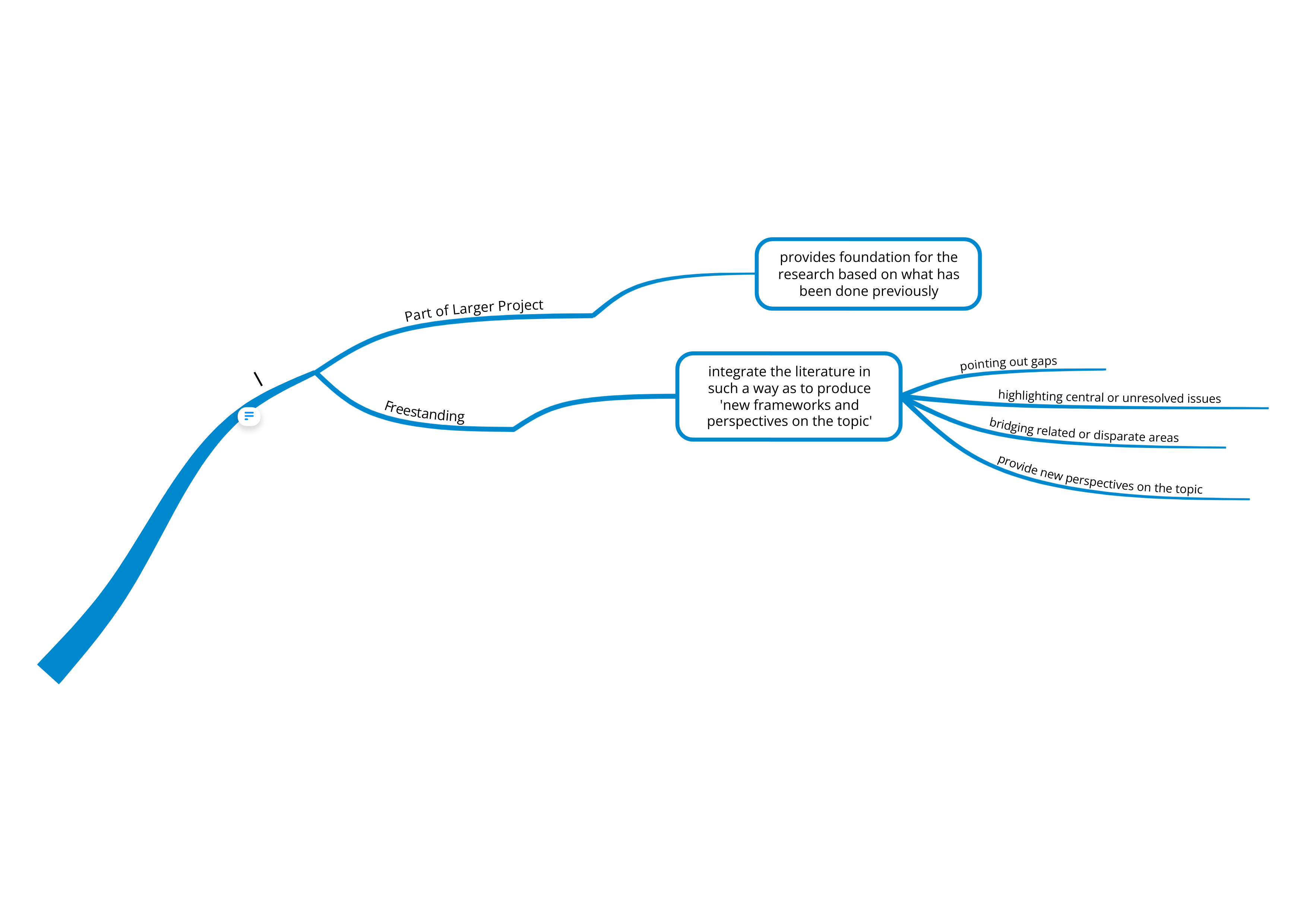
Minimal Requirements for a Literature Review
- Organization
- Synthesis
- Identification
- Research questions / problem statement
(www.writing.utoronto.ca/advice/specific-types-of-writing-literature-review)
